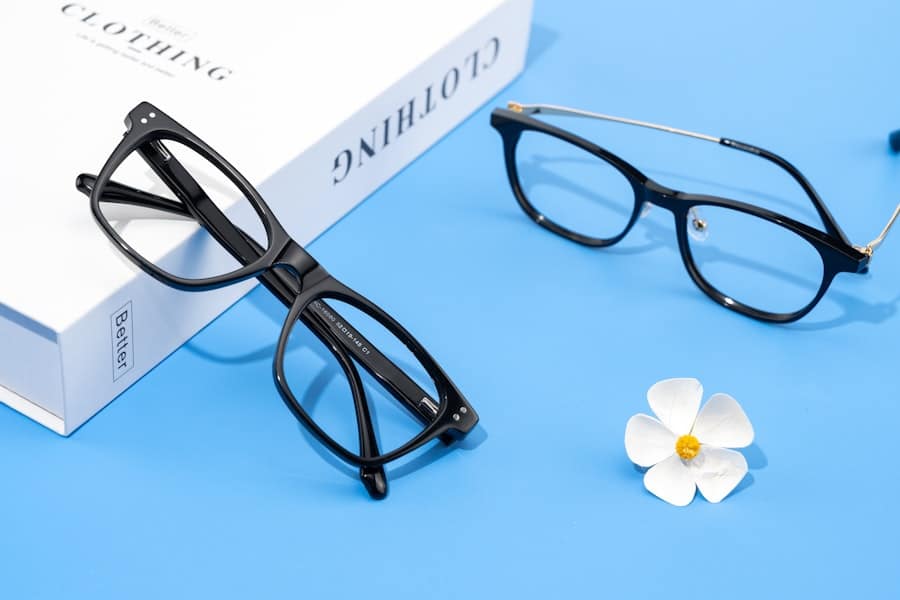Smart glasses represent a significant leap in the realm of assistive technology, merging advanced optics with digital interfaces to enhance the lives of individuals with disabilities. These innovative devices are equipped with features such as augmented reality (AR), real-time data processing, and connectivity to various applications, making them versatile tools for improving accessibility. The integration of smart glasses into assistive technology is not merely a trend; it signifies a paradigm shift in how individuals with disabilities interact with their environment, access information, and communicate with others.
The evolution of smart glasses has been driven by advancements in miniaturization, sensor technology, and artificial intelligence. As these technologies have matured, they have opened new avenues for creating solutions tailored to the unique challenges faced by people with disabilities. From visually impaired individuals who require navigation assistance to those with cognitive disabilities needing reminders and prompts, smart glasses are being designed to cater to a wide array of needs.
This article delves into the multifaceted applications of smart glasses in assistive technology, exploring their potential to transform lives and enhance independence.
Key Takeaways
- Smart glasses are a form of assistive technology that can provide support for individuals with disabilities.
- Smart glasses can assist the visually impaired by providing real-time object recognition, navigation assistance, and text-to-speech capabilities.
- For individuals with hearing impairments, smart glasses can offer real-time captioning, sound amplification, and visual alerts for environmental sounds.
- Smart glasses can support individuals with cognitive disabilities through memory prompts, task reminders, and social cue recognition.
- Individuals with physical disabilities can benefit from smart glasses with gesture recognition, voice control, and remote communication capabilities.
How Smart Glasses can Assist the Visually Impaired
For individuals with visual impairments, smart glasses can serve as a powerful tool for navigation and information retrieval. Equipped with cameras and sensors, these devices can analyze the surrounding environment and provide auditory feedback to the user. For instance, the Aira service utilizes smart glasses to connect visually impaired users with trained agents who can describe their surroundings in real-time.
This interaction allows users to navigate unfamiliar spaces with confidence, whether they are traversing busy streets or exploring new buildings. Moreover, smart glasses can incorporate text recognition capabilities, enabling users to read signs, menus, or printed materials effortlessly. Applications like Seeing AI utilize the camera on smart glasses to identify text and convert it into speech, allowing users to access written information that would otherwise be inaccessible.
This functionality not only enhances independence but also fosters social inclusion by enabling visually impaired individuals to participate more fully in everyday activities, such as dining out or attending events.
Smart Glasses for Hearing Impairments
Smart glasses also hold promise for individuals with hearing impairments by providing visual cues and enhancing communication. One of the most innovative applications is the integration of real-time captioning directly onto the lenses of the glasses. This feature allows users to read spoken dialogue during conversations or presentations without needing to rely solely on hearing aids or interpreters.
For example, Google Glass has been utilized in various settings to display captions for live events, making it easier for individuals with hearing loss to engage in discussions and understand spoken content. In addition to captioning, smart glasses can facilitate communication through augmented reality features that display sign language interpretations. By overlaying animated avatars or visual representations of sign language onto the user’s field of vision, these devices can bridge the gap between hearing and non-hearing individuals.
This capability not only enhances understanding but also promotes inclusivity in social interactions, allowing for more seamless communication in diverse environments.
Smart Glasses for Cognitive Disabilities
Cognitive disabilities encompass a wide range of conditions that affect memory, attention, and problem-solving abilities. Smart glasses can be tailored to support individuals with these challenges by providing reminders, prompts, and contextual information in real-time. For instance, a user with memory impairments might benefit from a smart glasses application that displays reminders for daily tasks or appointments directly in their line of sight.
This hands-free approach ensures that critical information is readily available without requiring the user to consult a smartphone or other device. Additionally, smart glasses can assist individuals with cognitive disabilities by offering guided navigation through complex environments. By utilizing augmented reality overlays, these devices can provide step-by-step directions or highlight important landmarks, reducing anxiety and confusion when navigating unfamiliar spaces.
For example, a person with autism spectrum disorder may find it easier to follow visual cues provided by smart glasses when transitioning through busy public areas, thereby enhancing their overall sense of security and autonomy.
Smart Glasses for Physical Disabilities
Individuals with physical disabilities often face significant barriers in their daily lives, particularly when it comes to mobility and interaction with their environment. Smart glasses can play a crucial role in overcoming these challenges by enabling hands-free control of devices and providing adaptive interfaces. For example, users with limited mobility can utilize eye-tracking technology integrated into smart glasses to control computers or smartphones simply by looking at icons on the screen.
This functionality empowers individuals who may struggle with traditional input methods to engage with technology more effectively. Moreover, smart glasses can enhance accessibility in physical environments by providing real-time information about obstacles or hazards. For instance, devices equipped with obstacle detection sensors can alert users to potential dangers in their path, such as curbs or low-hanging branches.
By offering enhanced situational awareness, smart glasses can significantly improve safety and confidence when navigating both familiar and unfamiliar spaces.
Advantages and Limitations of Smart Glasses in Assistive Technology
Comprehensive Solution through Integration of Technologies
The integration of various technologies, such as GPS navigation, voice recognition, and augmented reality, creates a comprehensive solution that can be customized to meet individual needs.
Limitations and Challenges
However, there are limitations that must be acknowledged. The cost of smart glasses can be prohibitive for many users, particularly when considering the additional expenses associated with software applications and ongoing maintenance. Furthermore, the effectiveness of these devices is often contingent upon reliable internet connectivity and battery life, which can pose challenges in certain environments.
Privacy Concerns and Overall Impact
Privacy concerns also arise from the use of cameras and sensors that continuously capture data about the user’s surroundings. These factors must be carefully considered when evaluating the overall impact of smart glasses on assistive technology.
Future Developments and Innovations in Smart Glasses for Assistive Technology
The future of smart glasses in assistive technology is poised for exciting developments as research and innovation continue to advance. One area of focus is improving the integration of artificial intelligence (AI) into smart glasses, enabling them to learn from user behavior and adapt their functionalities accordingly. For instance, AI algorithms could analyze patterns in how users interact with their environment and provide personalized recommendations or alerts based on their preferences and needs.
Another promising avenue is the enhancement of battery life and miniaturization of components, which would make smart glasses more practical for everyday use. As manufacturers strive to create lighter and more comfortable designs, users will be more likely to wear these devices consistently throughout their daily activities. Additionally, advancements in augmented reality technology could lead to even more immersive experiences that seamlessly blend digital information with the physical world, further enhancing the utility of smart glasses for individuals with disabilities.
The Impact of Smart Glasses on Assistive Technology
The impact of smart glasses on assistive technology is profound and far-reaching.
As technology continues to evolve, the potential applications for smart glasses will expand even further, paving the way for a future where accessibility is seamlessly integrated into everyday life.
The ongoing development of smart glasses represents not just a technological advancement but a commitment to inclusivity and empowerment for all individuals. As society continues to embrace these innovations, it is essential to ensure that they are accessible and affordable for those who stand to benefit most from them. The journey toward a more inclusive world is ongoing, but smart glasses are undoubtedly playing a pivotal role in shaping that future.
A related article to The Role of Smart Glasses in Assistive Technology is “The Best Laptop for Copywriters: Finding Your Perfect Writing Companion” which discusses the importance of having the right tools for writers to enhance their productivity and creativity. To learn more about the best laptops for copywriters, check out the article here.
FAQs
What are smart glasses in assistive technology?
Smart glasses in assistive technology are wearable devices that incorporate a display and computer functionality to provide real-time information and assistance to individuals with disabilities. They can help with tasks such as navigation, object recognition, and communication.
How do smart glasses assist individuals with disabilities?
Smart glasses can assist individuals with disabilities by providing visual and auditory cues to help with navigation, recognizing objects, reading text, and accessing information. They can also facilitate communication through features such as speech-to-text and text-to-speech capabilities.
What are some features of smart glasses in assistive technology?
Some features of smart glasses in assistive technology include built-in cameras for object recognition, voice control for hands-free operation, augmented reality overlays for visual assistance, and connectivity to other devices for information access and communication.
What are the potential benefits of using smart glasses in assistive technology?
The potential benefits of using smart glasses in assistive technology include increased independence for individuals with disabilities, improved access to information and communication, enhanced navigation and object recognition capabilities, and the ability to customize the device to meet specific needs.
Are there any limitations or challenges associated with smart glasses in assistive technology?
Some limitations and challenges associated with smart glasses in assistive technology include cost, technical complexity, privacy concerns related to the use of cameras and sensors, and the need for ongoing support and training for users. Additionally, not all individuals with disabilities may find smart glasses suitable for their specific needs.



